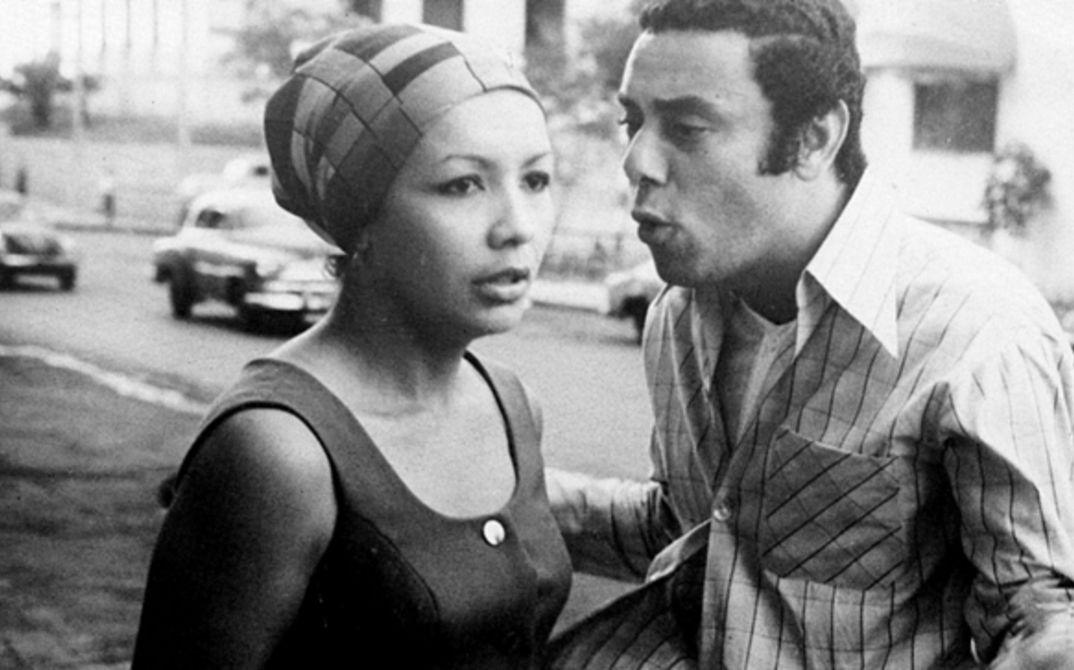TANGERINE (Sean Baker, USA 2015, 1. & 7.2.) is set on Christmas Eve in a far from glamorous part of Hollywood. Transgender sexworker Sin-Dee discovers that her boyfriend has been cheating on her. She and her best friend set out to find him, with their path crossing that of Armenian taxi driver Rezmik over and over. TANGERINE was one of the first feature films to be shot with a smartphone. Its realism is of immediate, breathtaking urgency and is reinforced by the use of an intensive color-editing.
SHOAH (Claude Lanzmann, F 1974–85, Part 1: 2.2., Part 2: 3.2.) Lanzmann’s “oral history of the Holocaust” (C.L) cannot be pigeonholed. Like no other work in the history of cinema, the film - without using archive material or voiceover - attempts to approach what one of the protagonists says at the beginning of the film: "It cannot be told; it goes beyond any imaginable depiction." But Lanzmann insists and persists in getting witnesses of the mass murder of Europe's Jews to talk, interviewing both camp survivors and perpetrators of the Nazis’ crimes. He uses precise imagery and sound to create a multifaceted picture of memory and enables a visualization of the past in the present.
HUNG SIK LEUNG DJE CHING (The Red Detachment of Women, directing collective, China 1970 1970, 6.2.) One of six films produced during the Cultural Revolution, this is at once an example of communist kitsch and a disturbing testimony of one of the most radical, state-dictated social upheavals of the 20th century. The revolutionary musical is set in the year 1930 on Hainan Island, where communist troops train a battalion of women. A young housemaid joins the battalion and breaks free from her petty bourgeois origins.
SOUS LES TOITS DE PARIS (Under the Roofs of Paris, René Clair, F 1930, 5. & 24.2.) Like many directors of the late 1920s, René Clair also regarded the emergence of sound film as an imminent threat and sound technology as the cause of a crisis, if not as the end of film as an art form. Despite his initial reservations, his film about the daily life of "ordinary people" in Paris is a magnificent "sound painting”, in which he set sound and image in contrapuntal relation to each other. Chansons and sounds rebel against all forms of superficial realism, as the street singer Albert rebels against his friend Louis, who tries to lure away his beautiful girlfriend Pola.
LADRI DI BICICLETTE (Bicycle Thieves, Vittorio De Sica, I 1948, 19. & 23.2.) The theft of a bicycle plunges a Roman family into such a dramatic existential crisis that the father sees no alternative but to become a thief himself. This upright fable is a central work of Italian neorealism, a radical movement of renewal in film history, which stood for unadorned cinema as a counterbalance to propaganda and entertainment.
IM NORDEN DAS MEER, IM WESTEN DER FLUSS, IM SÜDEN DAS MOOR, IM OSTEN VORURTEILE (Klaus Wildenhahn, FRG 1976, 20. & 28.2.) depicts the landscape and inhabitants of East Frisia and combines an observing camera, views of landscape, and encounters with a literary commentary. Klaus Wildenhahn, who made films for the NDR TV station for decades, was a pioneer of Direct Cinema in Germany. From the beginning of the 1960s, it became possible to create a hitherto unknown levity and directness thanks to light 16-mm cameras and portable recording equipment. A focus on everyday themes and “small people” characterized Wildenhahn’s work.
DE CIERTA MANERA (One Way or Another, Sara Gómez, Cuba 1977, 21. & 27.2.) The first Cuban feature film made by a woman combines the plot about a teacher and her relationship with a man and problems with a student from a difficult family background with documentary footage of marginalized people and districts in post-revolutionary Cuba. DE CIERTA MANERA is an example of “Third Cinema”, which consciously distanced itself from Hollywood’s model of entertainment, attempted to inspire audiences to political activism and adopted an anti-imperialist stance.
WANDA (Barbara Loden, USA 1970 | 22. & 26.2.) Hollywood in crisis: In the mid-1960s, the big studio productions were faced a lack of understanding and interest on the part of young people whose reality was shaped by protest movements and pop culture. A new generation of US filmmakers emerged who experimented with other forms of narration and depiction and produced outside of the studio system. Barbara Loden was part of the wider group of New Hollywood directors. In her first and only film, which is described as an "anti-Bonnie and Clyde", Wanda (Barbara Loden) turns her back on the mining region where she lives, her recently divorced husband and children, and runs off with a petty criminal to rob a bank.
(mg/al)



